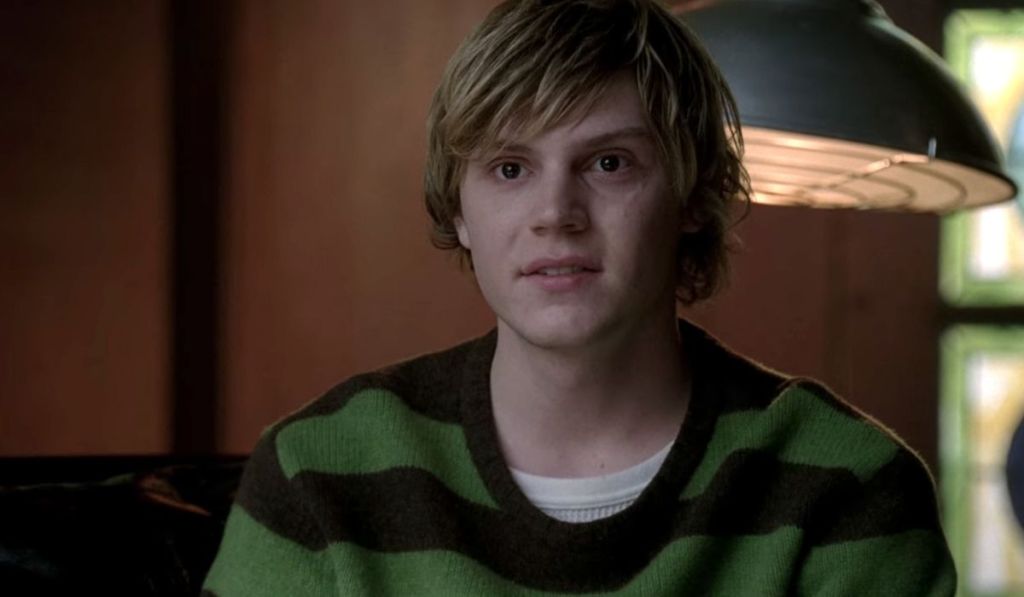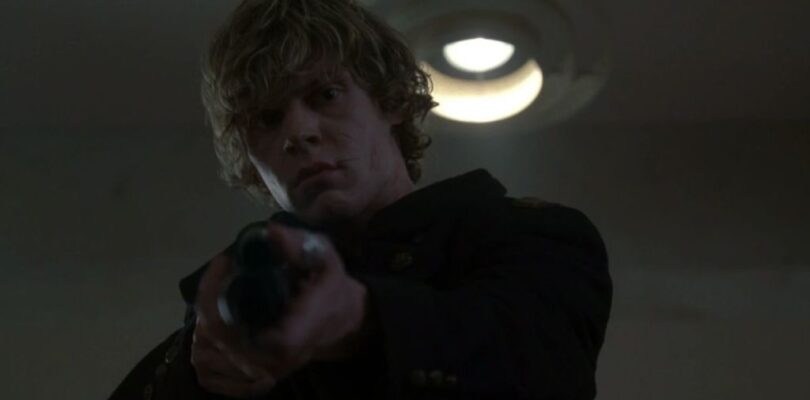In 2011, Ryan Murphy and Brad Falchuk introduced American Horror Story to the world – a show that would eventually become one of TV’s most influential horror anthologies. Its first season, since dubbed Murder House, delivered a range of memorable characters, a dark and layered storyline, and a striking visual aesthetic that quickly made its mark on pop culture and social media platforms. Yet, even after more than a decade, certain scenes and creative decisions continue to confuse viewers – particularly those surrounding Evan Peters’ Tate Langdon and the 1994 school shooting he carried out. Watching all the episodes provides clarity – but not entirely.
Videos by ComicBook.com
Tate’s introduction in the first episode of Murder House includes one of the season’s most iconic moments: a flashback of him walking through the school corridors with black skull makeup on his face. This visual has become emblematic of both the show and Tate himself, often shared online and seen even by those who haven’t watched the series. However, when the actual shooting is depicted in Episode 6, many fans noticed Tate is no longer wearing the makeup – which raised questions. At first glance, this visual inconsistency might seem insignificant, but it makes you think more about how the story fits together and what the show is really trying to do. Why the difference? Was the scene meant to be symbolic? A dramatized vision? Or simply a continuity error?
The answer lies in symbolism. The skull makeup represents how Tate perceives himself or wishes to be remembered. That stylized moment shows his introspective and poetic self-image – a way of mythologizing his actions, perhaps to assign meaning or beauty to something inherently tragic. In this sense, it’s not a literal depiction but rather an expression of his internal narrative. And it aligns with how the character often speaks – especially in his monologue with psychiatrist Ben Harmon (Dylan McDermott), where he reveals his complex, conflicted psyche.
[RELATED: This Season of American Horror Story Is Still Confusing 7 Years Later]
On the other hand, Episode 6 shows the event in a much more raw and unfiltered way. There, the shooting is stripped of any stylistic elements – no music, no heightened visuals – only raw, brutal violence. Tate appears without makeup, which reinforces the horror of his actions and removes any romanticized aura. It forces the viewer to see him not as a tragic antihero but as someone capable of real harm. So ultimately, the apparent contradiction isn’t a mistake, but a deliberate contrast between fantasy and reality.
On top of that, another point of confusion comes from Episode 5. One of Tate’s ghostly victims recalls that, before killing her, he asked, “Do you believe in God?” It’s a chilling question, rich in philosophical and religious undertones. However, that line is missing from the actual shooting scene. Was it forgotten? Or is it another example of narrative subjectivity? Again, this is a deliberate stylistic choice.

That line was introduced earlier to add emotional depth and tension to the victim’s memory and to Tate’s mindset. Repeating it in the shooting scene might’ve felt redundant or overly dramatic. Besides, there’s a significant pause in that moment – a silence before the gunshot – which could imply that the question was asked off-screen or in a way not shown to the viewer. This technique, known as Ellipsis, allows unsaid moments to carry just as much impact as spoken ones.
There’s also the question of whether Tate was even a student at the school during the attack. In a conversation with Violet (Taissa Farmiga), he says he was expelled – which makes you wonder what he was even doing at the school in the first place and the show never offers a definitive answer. Perhaps he was recently expelled and returned on his own, or perhaps he lied to Violet – something he does at other moments in the season.
Taken in isolation, these inconsistencies might just look like simple mistakes. But within the surreal and psychological framework of American Horror Story, they function as intentional narrative devices. The show (especially this season) regularly distorts time, perspective, and memory, encouraging viewers to question what is real and what is imagined. That lingering ambiguity – never fully knowing the truth – is exactly what keeps Tate Langdon’s storyline both compelling and unsettling, even all these years later.
American Horror Story is available to stream on Hulu.





